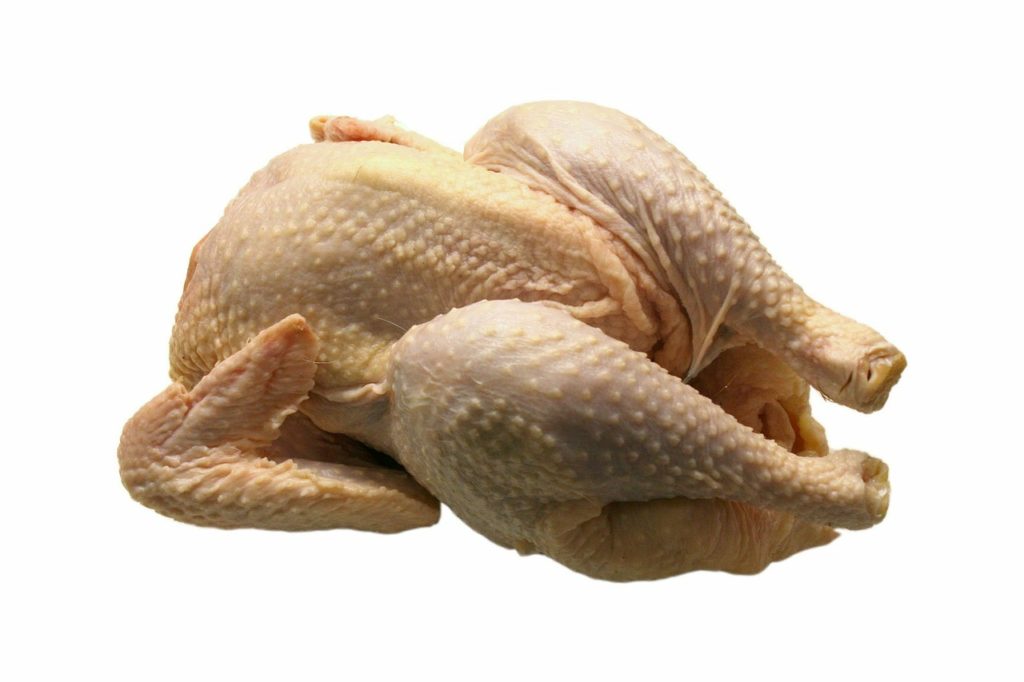All fields are required
Posted in Outbreaks & Recalls,Salmonella on October 17, 2018

Raw chicken Salmonella. They can’t seem to get away from each other. The CDC and public health and regulatory officials across multiple states are currently investigating a multistate outbreak involving a multi-drug resistant Salmonella infection. These illnesses have been linked to raw chicken products, leading to the United States Department of Agriculture’s Food Safety and Inspection Service’s (USDA-FSIS) involvement in the investigation. Here is what you need to know about this outbreak!
Many outbreaks don’t ever surpass a dozen infected cases, and when the numbers reach two dozen, it’s considered terrible. However, this recent raw chicken-related outbreak has left ninety-two individuals infected with the outbreak strain of Salmonella Infantis according to the Centers for Disease Control and Prevention (CDC). Cases have been reported across 29 states! While twenty-one of the ninety-two affected people have been hospitalized, no deaths have yet to be reported.
According to epidemiologic and laboratory evidence, many different types of raw chicken products are responsible for the outbreak and a variety of different sources have been found to be contaminated with Salmonella Infantis, meaning the source that is making people sick is broad and harder to contain than normal. Per information gathered via interviews, the ill people report having eaten many different types, brands, and cuts of chicken products purchased from a collection of locations. The particular strain has been detected “in samples taken from raw chicken pet food, raw chicken products, and live chickens,” according to the CDC.A single, common supplier for the contaminated raw chicken has yet to be determined.
Per the CDC’s report on the outbreak, “Antibiotic resistance testing conducted by CDC on Salmonella bacteria isolated from ill people shows that the outbreak strain is resistant to multiple antibiotics.” This is a dangerous situation, as it means it is much harder to eliminate! The CDC goes on to say that
The outbreak strain of Salmonella Infantis is present in live chickens and in many types of raw chicken products, indicating it might be widespread in the chicken industry. CDC and USDA-FSIS have shared this information with representatives from the chicken industry and asked about steps that they may be taking to reduce Salmonella contamination.
A resistance to antibiotics, however, is scary news to anyone who has contracted this specific strain of Salmonella. A visit to a healthcare professional is certainly advisable, but few medications are proving effective in fighting this particular strain. The best protection in this case, as in many, is in prevention.
All ninety-two of the infected illness had been reported by October 15th. A list of the states as well as number of cases can easily be found on the Map of Reported Cases page provided by the CDC. According to the research presented by the CDC, the illnesses have ranged in dates from January 19th to September 9th of this year, which patients’ ages ranging from less than twelve months to 105 years old. The median age is 36 and 69% of all the ill cases are female. Fifty-four of the ninety-two sick people were interviewed and 48 of these reported having prepared or eaten chicken that had been purchased raw. Products included ground chicken, chicken pieces, and whole chickens, but many different brands from multiple stores were used. According to one interviewee, the sickness occurred after feeding the pets in the home raw ground chicken as pet food, and another illness came about by someone who works directly with raising and processing chickens.
58 different slaughter and/or processing establishments have been identified as contaminated with the strain of Salmonella in question. Samples were collected from many different establishments as part of FSIS’s investigation testing routine, a standard test meant to identify Salmonella performance standards. As authorities collect more information, it becomes more and more apparent that people suffering from this outbreak become sick after handling or eating raw or undercooked chicken products.
The CDC offers a collection of helpful advice on the most effective ways to prevent a salmonella infection from spreading. They encourage retailers and consumers to “handle raw chicken carefully and cook it thoroughly to prevent food poisoning. This outbreak is a reminder that raw chicken can have germs that spread around food preparation areas and make you sick.” While we’ve all most likely been educated on the fact that it’s best to eat your meat cooked rather than raw, outbreaks like this one occur due to improper food handling techniques. The CDC is clear about not advising consumers to avoid eating chicken or that retailers should cease selling chicken products. They are simply and directly stating that properly cooking chicken is essential in order to prevent foodborne illnesses from spreading.
In order to make it as clear and concise as possible, the CDC has presented a list for all consumers to follow in order to prevent Salmonella infection from any raw chicken products from any source:
Be careful with raw ingredients, especially raw poultry, since even meats contaminated with some strain of Salmonella bacteria can appear and smell perfectly normal. Properly cooking these proteins is essential in avoiding the spread of foodborne illnesses.
If you believe you have developed a Salmonella infection, we want you to know that a Salmonella Lawyer at the Lange Law Firm, PLLC is currently investigating this matter and offering free legal consultations. Our lawyer, Jory Lange became a lawyer to help make our communities and families safer.
If you or a loved one have become ill with Salmonella after eating or handling raw chicken products, you can call (833) 330-3663 for a free consultation or complete the form here.
By: Abigail Ryan, Contributing Writer (Non-Lawyer)